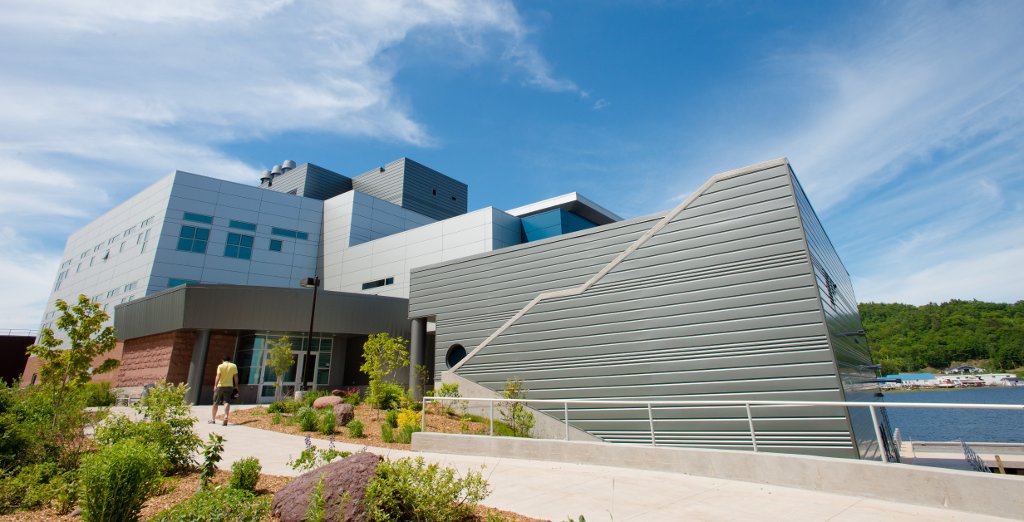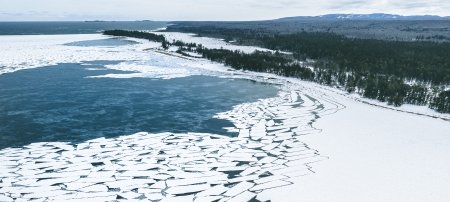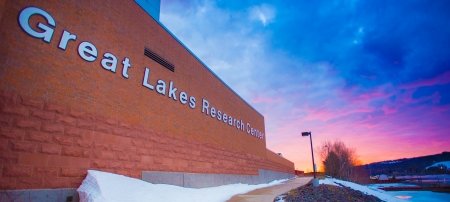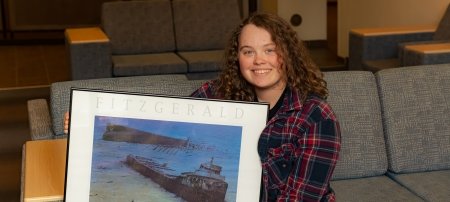The Great Lakes Research Center (GLRC) uses underwater robots and sonar to find and image sunken ships.
Drone is to autonomous underwater vehicle (AUV) as spelunking is to caving. One term over the other marks you as in the know-how. And our GLRC researchers know how to work an AUV.
This summer, Jamey Anderson, Chris Pinnow and Guy Meadows are working with archeologists from the Thunder Bay National Marine Sanctuary of NOAA to use AUVs to map submerged artifacts to very high standards. Using the GLRC's IVER3 AUV with the advanced EdgeTech 2205 sonar system, the team has been able to provide ultra-high resolution acoustic images of historic shipwrecks.
Here is the John J. Audubon, which sank in Lake Huron in 1854 in 180 feet of water and now within the NOAA's marine sanctuary boundaries.

Michigan Technological University is an R1 public research university founded in 1885 in Houghton, and is home to nearly 7,500 students from more than 60 countries around the world. Consistently ranked among the best universities in the country for return on investment, Michigan's flagship technological university offers more than 120 undergraduate and graduate degree programs in science and technology, engineering, computing, forestry, business, health professions, humanities, mathematics, social sciences, and the arts. The rural campus is situated just miles from Lake Superior in Michigan's Upper Peninsula, offering year-round opportunities for outdoor adventure.






Comments